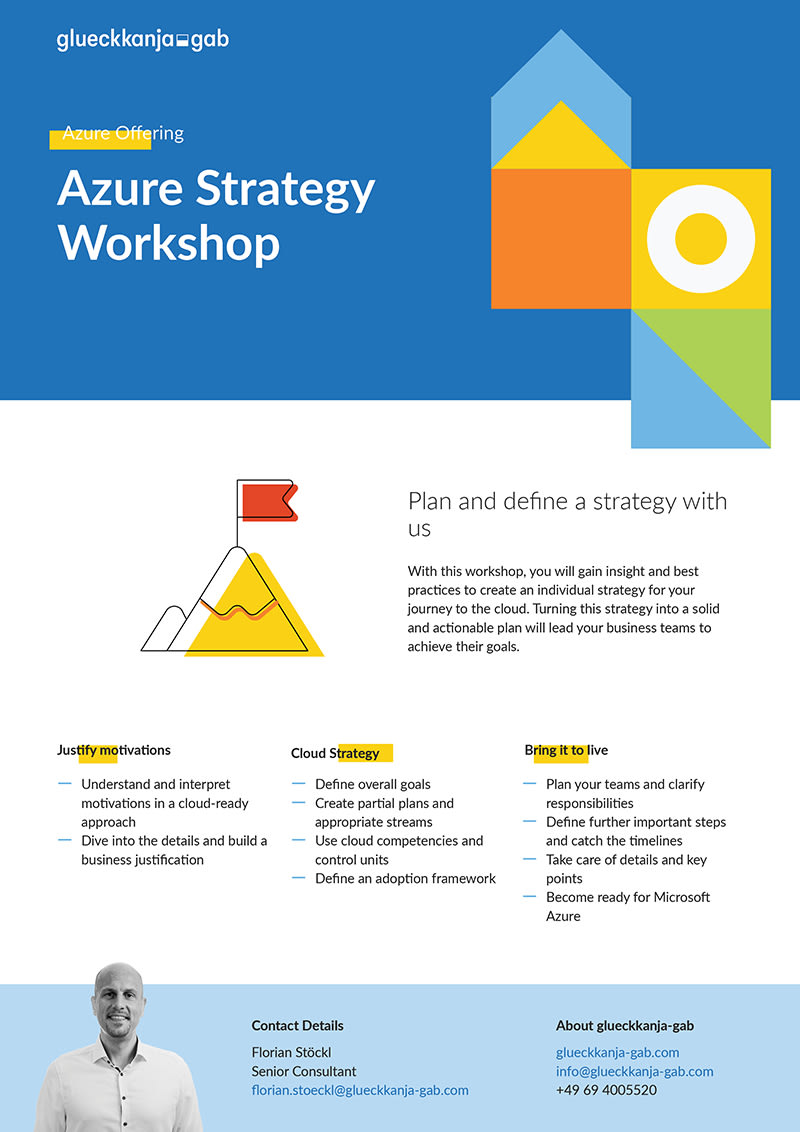All roads lead to the cloud
Plan Your Cloud
We define the first steps together
to build your cloud.
Draw the roadmap that fits you
Realize real value in the cloud with Azure
Many companies have already implemented Office 365 but are still hesitant to move their workloads fully to the cloud. Despite all the advantages, the transition is rarely easy and raises many questions:
- Which workloads need to be moved?
- When is the right time?
- Which strategy should be preferred?
6 good reasons to move to the cloud
Cost savings
When setting up your Azure architecture, you can save costs in a targeted manner. However, proper planning is crucial. You can tailor all services to your needs and shut down unused resources. High investments and long capital commitments are thus obsolete. Billing is done on a monthly basis, ensuring transparency.
Focus on your core business
Operating a powerful IT infrastructure requires a lot of in-house know-how and manpower. The need for specialists is correspondingly high. Thanks to the cloud, topics can be outsourced and the services of a managed service provider can be used to ensure IT availability. This allows companies to focus again on their core business.
Significantly more security
Traditional security strategies are no longer sufficient; increasing, extensive networking and cloud transformation require state-of-the-art security measures. Securing with cloud-hosted tools enables possibilities that go beyond what on-premises models can offer: security features can be activated and scaled up more quickly, threats are detected earlier, and patch management is overall better.
Improved availability
The Microsoft network connects over 60 Azure regions, over 220 Azure datacenters with over 170 edge locations, and spans the globe with more than 165,000 miles of terrestrial and submarine fiber optic cable. The reliability of this global network is crucial. With the Azure cloud, Microsoft has built a software-driven cloud-scale network that gives customers more flexibility and control to support the rapid growth and ever-changing demands of the cloud.
Fast scaling of
applications and infrastructure
Demand planning for fluctuating or rapidly increasing workloads is not easy in an on-premises environment. In the cloud, such requirements are easier to implement. Services can automatically scale to meet demand and handle workloads. They scale up to provide capacity during peak loads. Scaling automatically returns to normal when the peak subsides.
Easier to innovative business models
Data migration is essentially about moving existing workloads to the cloud infrastructure. Here, a great deal of added value can be created through a variety of innovations. Partners receive a secure and scalable IaaS/PaaS solution on which they can develop and operate their own solutions. The advantage: unlike operating your own infrastructure, this can be scaled centrally, vertically, and quickly as needed at any time.










